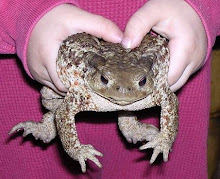Well my first creative act of 2012 was to scrape the year 2011 off the keyblock for my slow-to-move-forward Maple branch print. I have been working on it but it just seems to be taking longer than it should. I did go ahead and carve a new 2012 on another block.
My first attempt at proofing was a disaster as my keyblock shifted on all 3 copies making it impossible to see if the registration of subsequent blocks was on.
So last night I had another go.
2 pieces of shin torinoko, one fabriano artistico, one Magnani watercolor paper.
Registration is decent but not perfect. The leaves are too orange/red and not variegated enough--I'll need to play with them during the actual printing.
And I'll need to trim down a bit some of the blocks and adjust at least one kento.
Here are the two variants that look ok.
The biggest problem is with my Shina plywood blocks. My Italian "white glue" didn't completely wash off the block and there is a thin layer acting as a partial resist. This is pretty evident here where the brush strokes are fairly visible (and wouldn't be exactly reproducible) but worse, as I continued to print the seams began to print quite visibly. Not sure yet what to do about this. Ignore it or try and work around it. The same board on the other unglued side also was starting to show the seam when printed too so it is not just the glue.
The atmosphery speckling of the darker copy is due to the watercolor paper. It can be printed more evenly by pressing harder with the baren but I was mostly checking registration and trying to get an idea of color fields. I like how it looks but it really is a defect of printing.
Thursday, January 12, 2012
Maple Proofs
Subscribe to:
Post Comments (Atom)






I've never had seams show like that so it's hard to offer advise. Usually as I do more proofs defects in the background go away. Maybe sanding? I'm interested to see what happens!
ReplyDeleteI'm with Linda -- haven't had that experience with seams either. Sanding sounds like a good first step. I think the seams are holding more moisture and pigment than the rest of the board, so maybe do your last brushstrokes in the same direction as the seams? Nice fine linework on your keyblock.
ReplyDeletetry varnishing the block, half varnish and half thinner..it might help keep the background from absorbing water...or make it part of the image..I don't find it that distracting
ReplyDeleteGood luck
I'm going to let it fully dry; then sand it a bit to see if I can get the seams sanded flush again--I can actually feel them--I'll try to sand the surface a bit; then, if it is still so visible after printing, I will try to seal the block; it is a water issue--there are spaces between the middle layers and I think water is being absorbed from the carved out areas as I print--the block even felt heavier suggesting it was absorbing water. As I was only printing 3-4 copies to check registration and it is a big block I was printing pretty wet to keep the block from drying out before I could print it--it never got primed--but by the time I was overprinting the 2nd or 3rd layer of background I could already see and feel the seams printing.
ReplyDeleteToo noticeable for my taste--will have to either cancel out by painting in a varnish resist or recarve it if the above fails.
I'm with Barbara on this. I don't find the seams distracting. To me, it adds another element that I first thought was intentional. I will be interested to see how you tackle this.
ReplyDeleteLeigh
Hi Leigh, thanks for the comment/input.
ReplyDeleteYes, I'm sort of interested too on how I'll actually tackle this.
Initially conceived as a small, fairly simple print of orange and red leaves, in a kind of collage fashion on a simple monocolor ground in a kind of Japanese/Secession look.
But when it became a 14" x 14" square--it suddenly became quite a lot of area for a plain, solid background.
I had figured my home-sized paper would give me all kinds of mottling/speckling which would add some interest in the same way plate tone would on an etching. The glue resist has done that to some extent and the two visible verticals do suggest some kind of wall/background/wallpaper/etc.
As this was a branch, cut and place inside and the leaves curled and twisted--the verticals might be a fortuitous flaw.
Lightly sanded I'll see how it prints again on my next round of proofs on home-sized paper.
(I have some Echizen Kozo stashed away as a last resort.....)